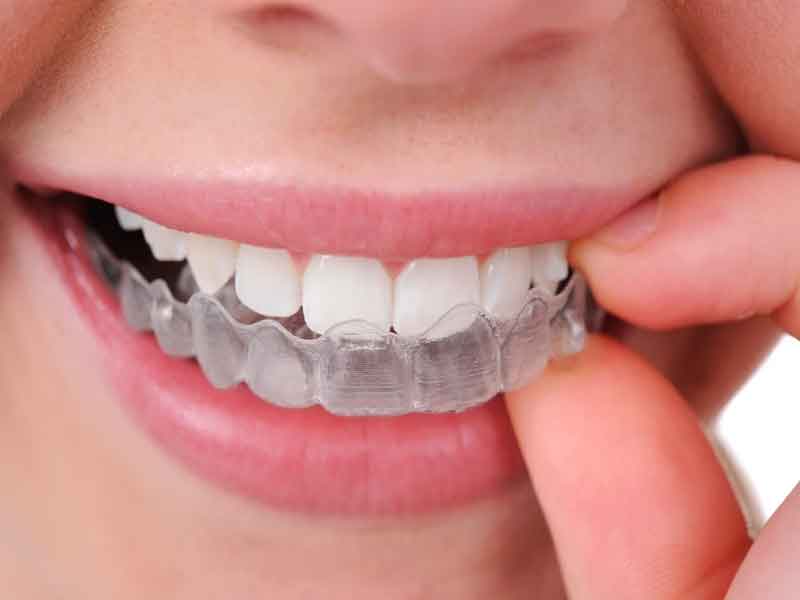Clear Aligner Braces vs Traditional Braces

When feeling unconfident about your smile, clear aligner braces or traditional braces could be a great option. Both options can straighten your teeth and provide you with a smile you’re proud of. Some examples of clear aligner braces would be Invisalign or Candid Aligners. These tend to be clear, removable plastic trays that are custom-fitted to your teeth. Each tray applies gentle pressure to shift your teeth into a straight alignment slowly over time. Every two weeks you get a new tray to shift your teeth into the desired placement.
There are several benefits to clear aligners. It’s less noticeable on your teeth for a discreet look. Its easier to remove for easy cleaning and eating. Also, there are no metal brackets or wires that can irritate cheeks/gums. Furthermore, it may require fewer in-office visits than traditional braces.
However, there are some disadvantages as well. Clear aligners tend to be more expensive that metal braces when it comes to the upfront cost. You must also be consistent with wearing the clear aligners 22+ hours a day. Lastly, your speaking could be negatively affected until you get adjusted.
If clear aligners aren’t the route you would want to go down, traditional braces could be an option. Traditional braces are made of metal or ceramic brackets that are bonded to each tooth. An orthodontist attaches a wire through each bracket and can tighten it over time to shift your teeth into proper alignment. Elastic ties or bands are also used to guide tooth movement.
There are several advantages to traditional braces. There tends to be a smaller upfront cost than clear aligners. Also, traditional braces can treat more complex alignments like bite issues or severely crooked teeth. Brackets are fixed in place, so there’s less reliance on patient compliance. Traditional braces also tend to provide faster results than clear aligners.
Although there are a lot of benefits when it comes to traditional braces, the disadvantages should be something to take into consideration as well. Brackets are wires are going to be visible when you smile. Food can become stuck in brackets which require diligent cleaning. Wires and brackets could get caught on your lips and cheeks and cause irritation. Frequent in-office visits are needed for adjustments. Some dietary restrictions are required to avoid damage.
Both clear aligners and traditional braces offer great solutions to providing you with a smile that makes you confident. If you are concerned about aesthetics, clear aligners might be a better alternative. However, if you don’t think that you could stay dedicated to wearing them 22+ hours a day then traditional braces could be a better option. Getting braces is an important investment in your oral health and appearance. By understanding the differences between clear aligners and traditional braces, you can make the best decision for your smile and personal needs.
